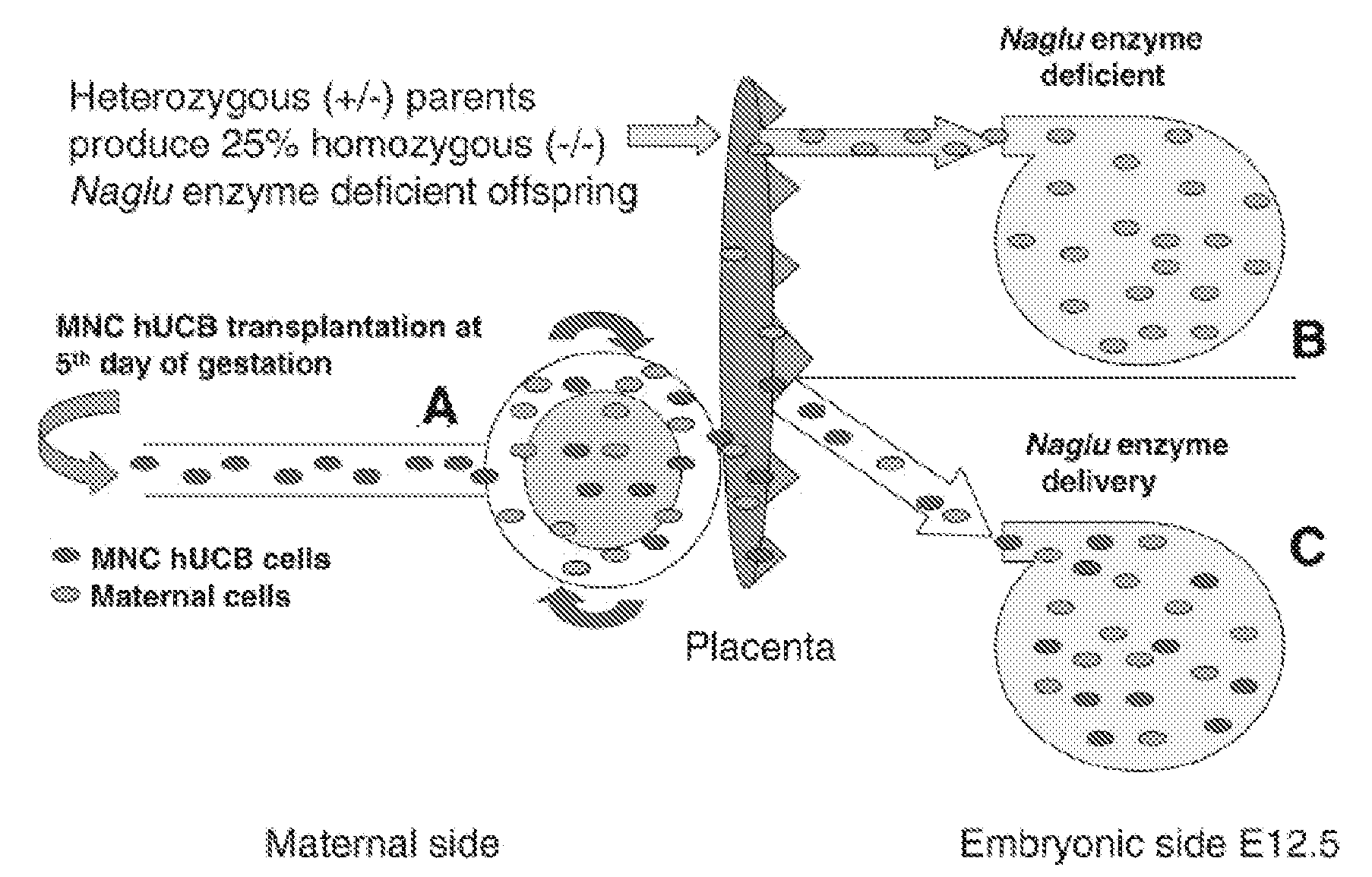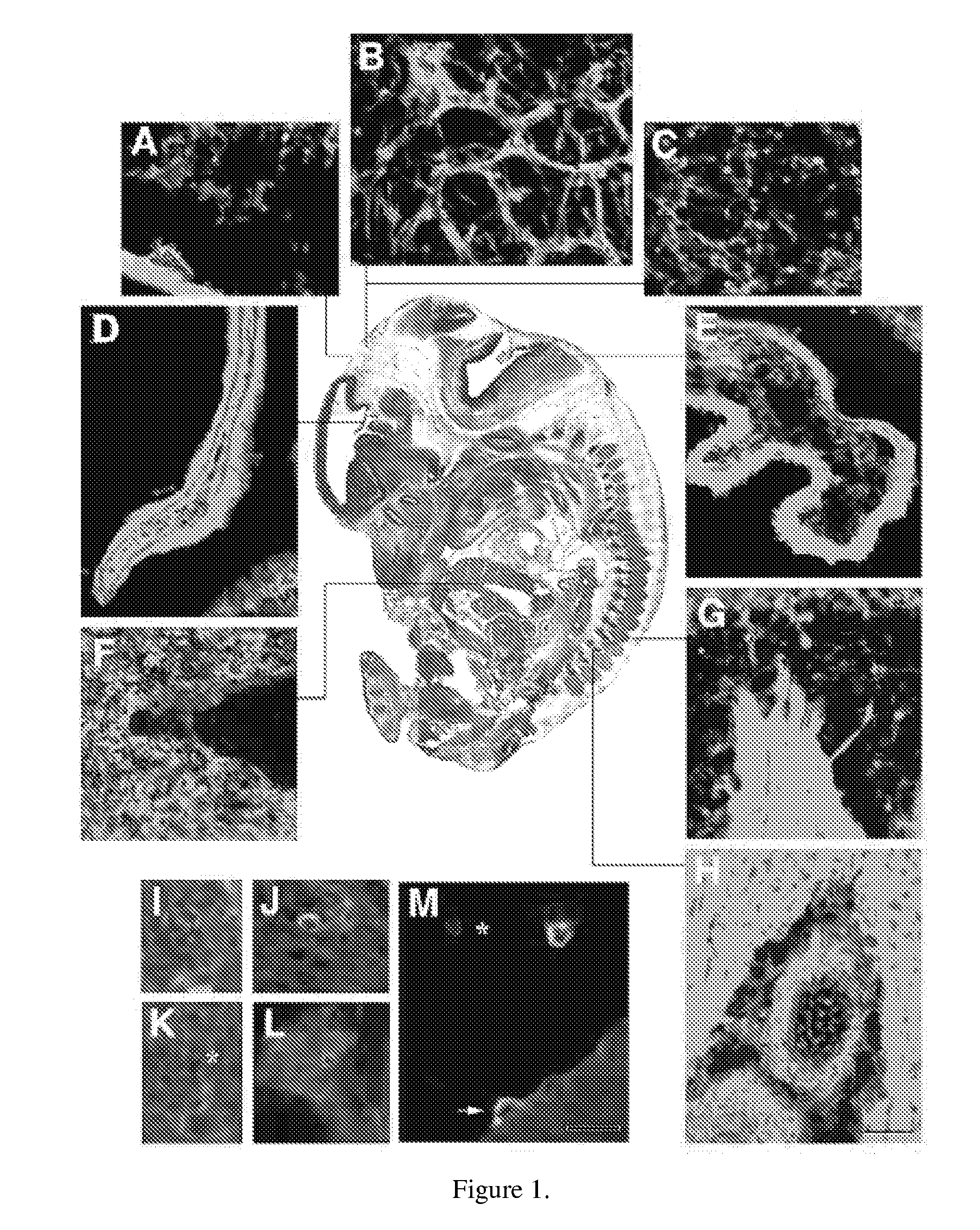Novel method of prenatal administration of mammalian umbilical cord stem cells for the intrauterine treatment of mammalian lysosomal storage diseases
a technology of mammalian umbilical cord stem cells and intrauterine treatment, which is applied in the field of medical and veterinarian therapeutics, can solve the problems of significant clinical morbidity and dysfunction, premature death, and more difficult gene therapy in utero for researchers, and achieves significant clinical improvement, improved development outcome, and improved outcomes.
- Summary
- Abstract
- Description
- Claims
- Application Information
AI Technical Summary
Benefits of technology
Problems solved by technology
Method used
Image
Examples
examples
Animals
[0026]All animals used in the study were obtained from the USF established colony of Naglu mice developed from heterozygous Sanfilippo Type B B6.129S6-Naglutm1fn breeding pairs (The Jackson Laboratory, Bar Harbor, Mass.). The first generation (F1) was obtained from these breeding pairs by crossing male with female (both heterozygous) to produce littermates of three phenotypes: homozygote, heterozygote and wild-type. Phenotyping of all animals were performed by enzyme assay The five mating pairs of these heterozygous Naglu mice and two pairs C57BL / 6 (control) at 7-8 weeks of age were used for the study. All mice had been maintained on a 12:12 hr dark:light cycle and given food and water ad libitum.
[0027]This was the first pregnancy for all female mice in the study. To obtain timed pregnancies, females were paired with males in the afternoon prior to the end of the light cycle. On the following 3 days, females were examined early in the morning for the presence of a copulatory ...
example 2
[0043]In a follow-up study, we investigated if mononuclear cells derived from human umbilical cord blood (MNC hUCB) transplanted into additional pregnant female mice modeling Sanfilippo Syndrome Type B at the 5th day of pregnancy could correct enzyme deficiency in offspring at birth. This differed from the preceding study in which gestation was interrupted at the seventh day after MNC hUCBC transplantation. Again both parents were heterozygous for the mutation. All pups were euthanatized at 1-2 hours after birth. The normal distribution of pup phenotypes from heterozygote parents is: 50% heterozygote, 25% wild type, and 25% homozygote. Results showed that phenotype distribution in pups from control non-treated mother (#24C, see Table 5) was 60% heterozygote, 20% wild type, and 20% homozygote. When we transplanted 3×106 MNC hUCB cells into mother #21, enzyme activity was not corrected in newborn pups (45% heterozygote, 22% wild type, and 33% homozygote). With an increased dose of 9×1...
PUM
 Login to View More
Login to View More Abstract
Description
Claims
Application Information
 Login to View More
Login to View More - R&D
- Intellectual Property
- Life Sciences
- Materials
- Tech Scout
- Unparalleled Data Quality
- Higher Quality Content
- 60% Fewer Hallucinations
Browse by: Latest US Patents, China's latest patents, Technical Efficacy Thesaurus, Application Domain, Technology Topic, Popular Technical Reports.
© 2025 PatSnap. All rights reserved.Legal|Privacy policy|Modern Slavery Act Transparency Statement|Sitemap|About US| Contact US: help@patsnap.com



